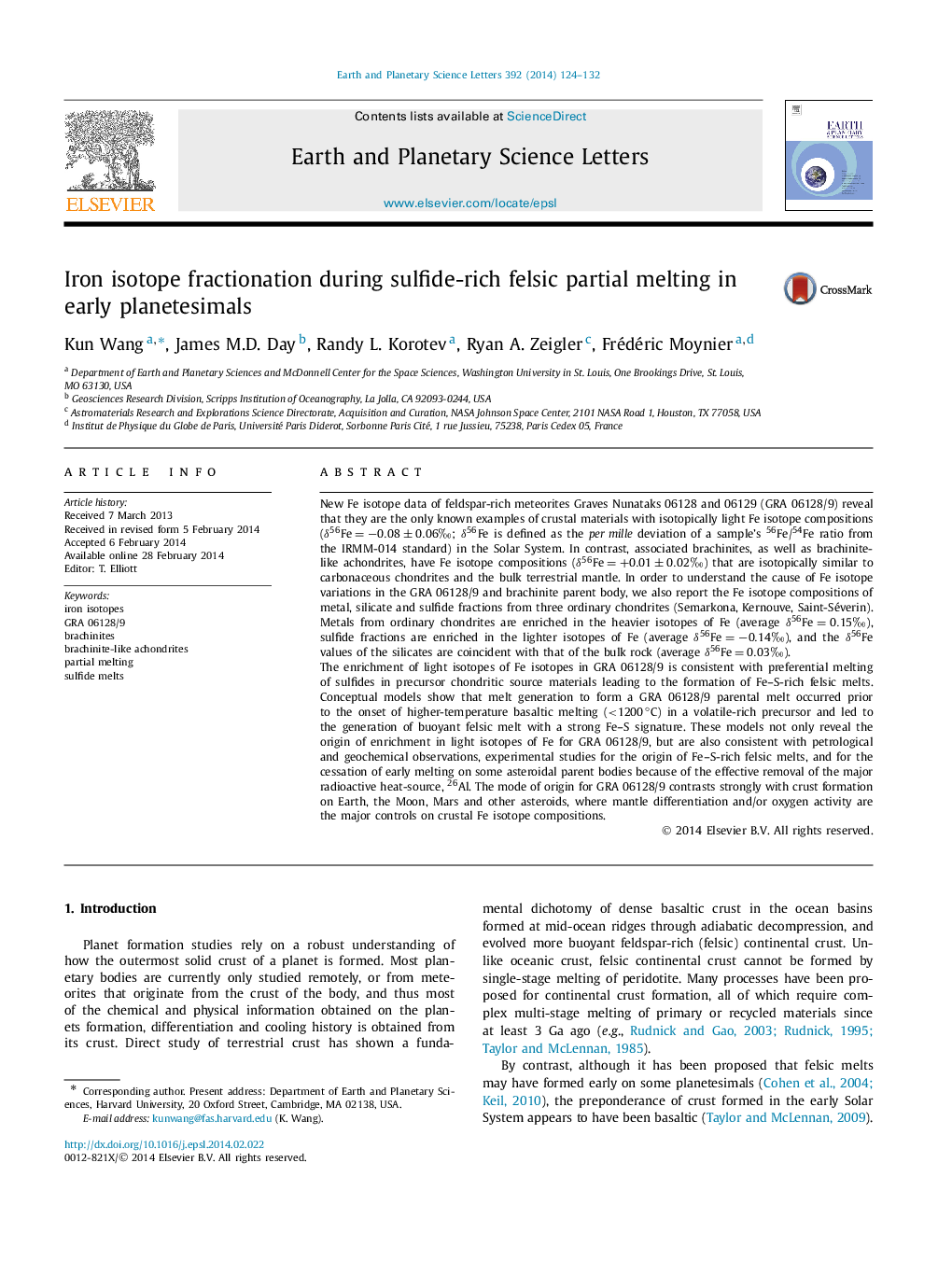| کد مقاله | کد نشریه | سال انتشار | مقاله انگلیسی | نسخه تمام متن |
|---|---|---|---|---|
| 6429493 | 1634764 | 2014 | 9 صفحه PDF | دانلود رایگان |
- Iron isotope compositions are reported for Graves Nunataks 06128/9 brachinites and brachinite-like achondrites.
- GRA 06128/9 is the first crustal material with isotopically light Fe composition.
- We propose GRA 06128/9 is formed by Fe-S and Al-rich melts from chondritic precursors.
- The mode-of-origin for GRA 06128/9 contrasts with andesitic crust formation on Earth.
New Fe isotope data of feldspar-rich meteorites Graves Nunataks 06128 and 06129 (GRA 06128/9) reveal that they are the only known examples of crustal materials with isotopically light Fe isotope compositions (δFe56=â0.08±0.06â°; δ56Fe is defined as the per mille deviation of a sample's 56Fe/54Fe ratio from the IRMM-014 standard) in the Solar System. In contrast, associated brachinites, as well as brachinite-like achondrites, have Fe isotope compositions (δFe56=+0.01±0.02â°) that are isotopically similar to carbonaceous chondrites and the bulk terrestrial mantle. In order to understand the cause of Fe isotope variations in the GRA 06128/9 and brachinite parent body, we also report the Fe isotope compositions of metal, silicate and sulfide fractions from three ordinary chondrites (Semarkona, Kernouve, Saint-Séverin). Metals from ordinary chondrites are enriched in the heavier isotopes of Fe (average δFe56=0.15â°), sulfide fractions are enriched in the lighter isotopes of Fe (average δFe56=â0.14â°), and the δ56Fe values of the silicates are coincident with that of the bulk rock (average δFe56=0.03â°).The enrichment of light isotopes of Fe isotopes in GRA 06128/9 is consistent with preferential melting of sulfides in precursor chondritic source materials leading to the formation of Fe-S-rich felsic melts. Conceptual models show that melt generation to form a GRA 06128/9 parental melt occurred prior to the onset of higher-temperature basaltic melting (<1200â°C) in a volatile-rich precursor and led to the generation of buoyant felsic melt with a strong Fe-S signature. These models not only reveal the origin of enrichment in light isotopes of Fe for GRA 06128/9, but are also consistent with petrological and geochemical observations, experimental studies for the origin of Fe-S-rich felsic melts, and for the cessation of early melting on some asteroidal parent bodies because of the effective removal of the major radioactive heat-source, 26Al. The mode of origin for GRA 06128/9 contrasts strongly with crust formation on Earth, the Moon, Mars and other asteroids, where mantle differentiation and/or oxygen activity are the major controls on crustal Fe isotope compositions.
Journal: Earth and Planetary Science Letters - Volume 392, 15 April 2014, Pages 124-132
